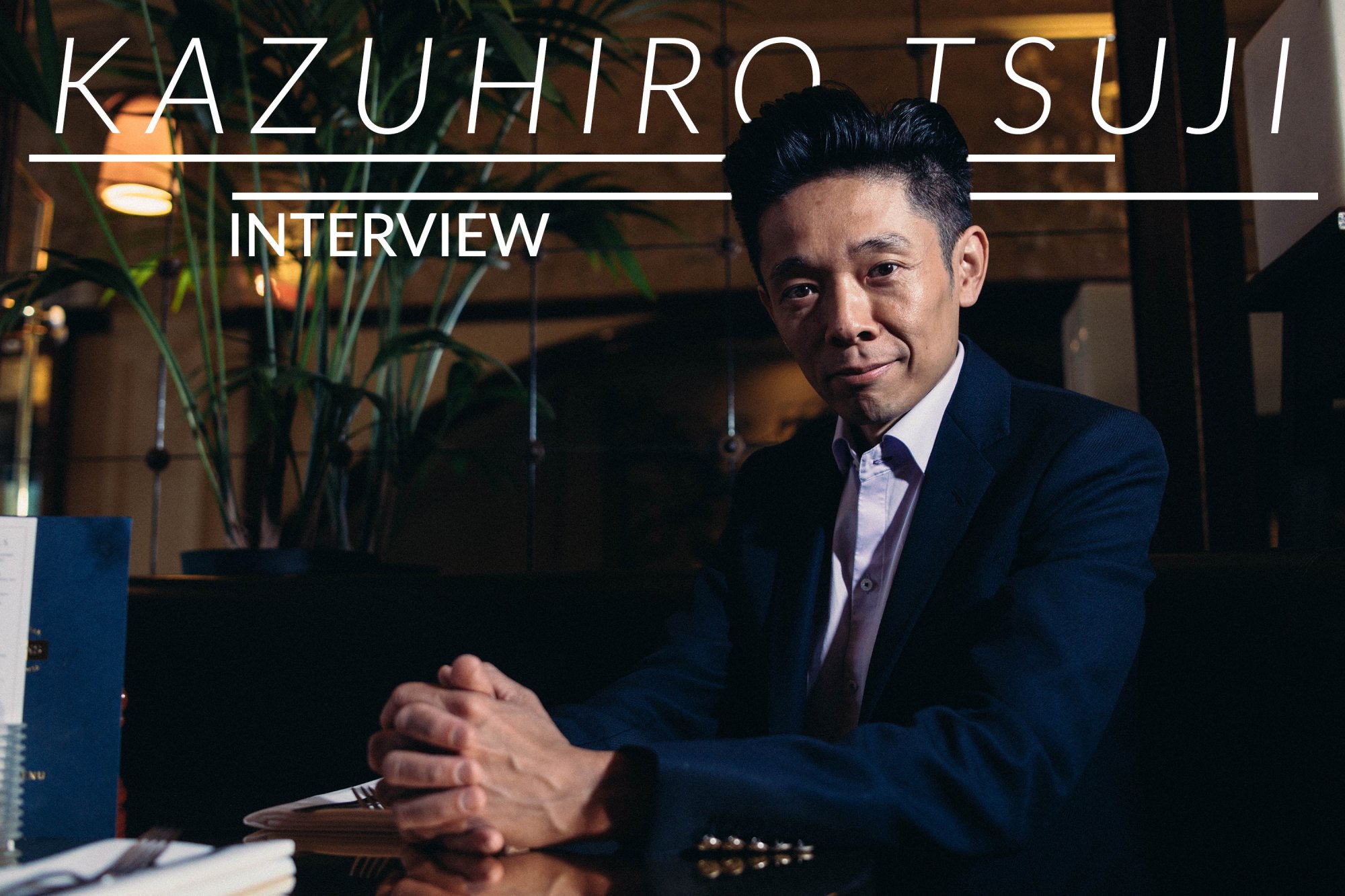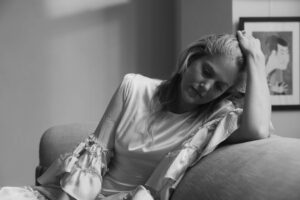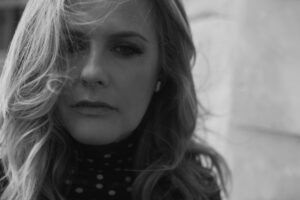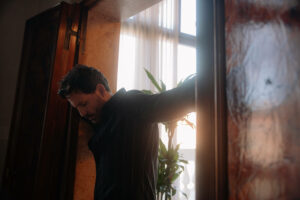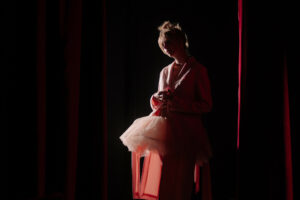What once was a shop for men’s tailor-made suits, the Wells & Co, was the background of our interview with Kazuhiro Tsuji. Now there is a restaurant, the Browns Mayfair, that might just seem like a beautiful, beautiful location, one of those many gems that London can offer, but in this case it was something more. We chose this location to interview Kazuhiro, makeup artist of the film “Darkest Hour“, who managed, with his art, to transform the face of actor Gary Oldman in a Winston Churchill, just as credible as spectacular.
And it’s precisely this the reason that made our encounter with him, in this specific place, so special. Winston Churchill was a customer of Wells & Co, late ’40s and early ‘50s and, just in the room where we had our chat with the artist, we found a gold plaque and vintage photography dedicated to the Prime Minister. It can be said it was, at least a little bit, a sign of Destiny. This made everything even more magical, while knowing the world and the brilliant mind of a man and artist who decided to tell so much of himself through his art, dedicating his life to the faces he sculpts and entrusting them with his eternal moments.

After a long period of work in the world of cinema, in 2012 Kazuhiro decided to leave it to follow a path of creation of something that can remain impressed in the world. And so, he devoted himself completely to fine art, never losing sight of what fascinates him and what distinguishes him from the rest of the world: creating faces, noticing those minimal expressions, those tics that then turn into wrinkles. All those details that transform a face into an emotion, without distorting it, without ever losing the history of those faces. And he chooses them precisely because of their stories: to give them a new life, an escape from a past of suffering that has certainly shaped them but also “damned” their complicated life (for example Salvador Dalì and Frida Khalo). And so, through artists and men who have been masters and inspirations, Kazuhiro leaves all the pieces of himself on the Earth, evoking the lives of others and letting go the pieces of his life.
But then that message, in 2017, in which Gary Oldman asked him: “Return to work in the world of cinema for “Darkest Hour”, I will say yes if you will be there”. It took a week. But he couldn’t miss a chance like that and, as he says, it happens once in a lifetime.
So Kazu comes back to cinema where he had previously worked on films such as “The Curious Case of Benjamin Button”, “The Ring”, “Dawn of the Planet of the Apes”, “Man in Black”, just to name a few. And his return is triumphant: nominated for Best Makeup at the Baftas where he won, Kazu also triumphed at the Oscars, winning an Academy Award as Best Makeup.
___________________
What inspired your artwork for the first time?
___________________
You know, I do portraits of human faces and I really like human faces, because when I was a child I was an introvert…I’m still an introvert, I’m not good at parties and such. But you know, I’m from Kyoto, Japan, and they have an old society and people have got two sides. I’m always wondering what people are thinking inside, instead of listening to who is talking, and what they are showing.
That’s also because I’m from a bad family and I’m always trying to guess what people are really thinking on the inside. And that kind of fascinated me to study who they are and I think that’s the reason why I’m doing portraits, that’s from there. Generally, I like to study human faces and I like to study who they are, so that’s my inspiration.
___________________
How it feels to be back at the BAFTAs?
___________________
Actually, you know, this is the first time I attend the ceremony. I’ve never been to BAFTA before and I know that some people said that the ceremony is better than the Oscars. But I attended Oscars a few times and I’m looking forward to attend. I’m sure it’s quite a different culture so I’m really honored to be nominated and to be here.
___________________
And what about the Oscars? What was your first thought when you were nominated.
___________________
It’s a long process actually. It starts from considerations and calls and then you’re nominated. It’s a gradual build up and it’s not like “oh, suddenly I know”. So it’s really great, because the studio really did a great effort for everybody to be considered for the Oscar and I was.
And it’s great because I was away from the film industry for a while and then I did this movie and was nominated…you know, it’s a great honor.

___________________
And what was the reason why you left the cinema industry?
___________________
When I did several shows, “How The Grinch Stole Christmas” was one of them. And I had a bad experience on set, working with actors and everything. It was a long show too, like I did the makeup a hundred times on the set for Jim Carrey and he was really tough.
After that, I started to analyze if I really enjoyed working on set. And it was around 2002, I created a portrait of my mentor, Dick Smith, and after I made it, I was looking at the reaction of Dick Smith and the other audience who saw the portrait and I thought “ok, yes, this is something I really want to do” instead of working in the cinema industry. But I couldn’t figure out how I could make a living as a fine art artist for a while. It took me almost ten years to decide, to really “decide”, and quit the film industry.
And then, in 2012, around that time, Dick Smith moved to LA to be in an assisted living facility and I was talking with him about his life and how he felt about it, because at that time he was around 90 years old. From our side, it looked like he had a great life, and a great carrier and everything, but he wished he had done more than what he did. So I reflected that to my life and I thought “ok, I should really go into fine art”.
At that time, I was around 40 and if I really kept going with the makeup job in the film industry for the rest of my life, like other 40 years, I wondered if I was going to be really happy about my life. I didn’t want to be sad, so I made the decision: “This is the time I really can change my life” and that’s why I went into the fine art.

I wondered if I was going to be really happy about my life. I didn’t want to be sad, so I made the decision: “This is the time I really can change my life”
___________________
And we all know the famous story about Gary Oldman calling you back for “Darkest Hour”, but what was the thing that made you say “yes, I want to do it”?
___________________
My inspiration to be a makeup artist was Dick Smith’s work on Hal Holbrook turning him into Abraham Lincoln. I saw his picture and decided that’s something I really wanted to do. Next day I went to the library and put together pictures of Lincoln, and I started doing makeup for myself as Lincoln and that was the start. It was the kind of film I wanted to work on but I never had the opportunity to do that, because the majority of the films I worked on were like Sci-Fi and comedy.
Gary approached me about this film. He is a great actor and I wanted to work with Gary for a long time. And the crew and the director were amazing, and the movie was amazing. So I thought if I passed I would’ve regretted this, this is a once in a lifetime opportunity for me, one that I wanted to do for a long time in my career, like more than 20 years.
So first I told Gary “I have to think about it, give me a week”. And I was thinking and after that I decided I should really take this job because it’s an amazing project.
___________________
And what was your historic research on Churchill?
___________________
I was looking to a lot of photos. Everything available online, books and obviously documentary films, and I gathered up and made a big file on the computer and I also read his biography: in what kind of house he was raised in and what kind of life he had. And I took a life cast of Gary: that was the start of my study.
I wanted to know what he looked like but I also wanted to know what kind of person he was.
The character’s personality is always reflected in what he looks like, in their expression, how they got wrinkles. If something’s missing, like one wrinkle, people start to wonder “why is he so smooth?”.

___________________
Also Gary Oldman’s face is so different from Churchill’s.
___________________
It was really fascinating.
I wasn’t sure how I would do it, so I did a lot of test makeup. And went through different phases, sometimes maybe too much or too little.
So we tried to figure out what would be a good balance to make Gary look like Churchill and, at the same time, he could act through the makeup. Because we didn’t want to make him look like he would be wearing a mask. It was supposed to be movable and he had to be able to express emotions.
___________________
How’s your relationship with Gary now?
___________________
He is amazing.
If all actors were like him I wouldn’t have left the film industry; he’s such a sweet person and very talented, of course. He’s amazing, very respectful with other people and he respects our art and their art. It was a tremendous honor to work with him. He’s a genuine and nice person.


___________________
How do you choose the person whose face you’re going to sculpture?
___________________
It’s just about the timing in my life. Sometimes it’s just that someone pops up in my mind, and the more I think about it, the more I say to myself, “Ok, I should create this portrait.” But most of the subjects I created were those people with a tough childhood or a mental of physical problem.
I had a bad childhood and I’m still trying to figure out what could be better and how can I be a better person.
I almost go through their lives and reflect it on my own life and create a portrait. In a way I want the viewers to be encouraged by looking at my work and knowing who they are.
That’s my reason.
Also including myself.
___________________
What’s your definition of your art?
___________________
I consider every piece almost like a gravestone. Showing what I was thinking in that moment and it’s also something that I leave behind.
I don’t want my grave because I don’t believe in that. But what I believe is that, in every moment I create something, that’s the proof that I was here and also is really something respectful for the humankind.
We try to figure out why it’s important to be here and why we think it’s important to be here, because most of the time we destroy something. I create something to almost figure how why we’re here.
“I think it’s simply a process of living, of passive living, and that’s my artwork”.

___________________
Have you ever thought about doing a sculpture of yourself?
___________________
Many people ask me about it, because I guess it’s a common thing for a portrait artist to do their own face, you know. I might do it someday, but I’m not so interested in doing my own face. Maybe at the end of my life I will do it and it will be my last piece.
___________________
What’s next for you?
___________________
What I’m planning is to do a solo show in Japan in 2020 and I want to have like 20 pieces to show in different cities in Japan, that’s my goal.
That’d be amazing because I never had the opportunity, my pieces are quite big… it’s not like a painting, that’s easy to ship around, so it takes like a lot of planning and founding.
___________________
Something in the Cinema industry, also?
___________________
I got some offers and if it’s really interesting and great I will do it, but my main interest right now is fine art.


